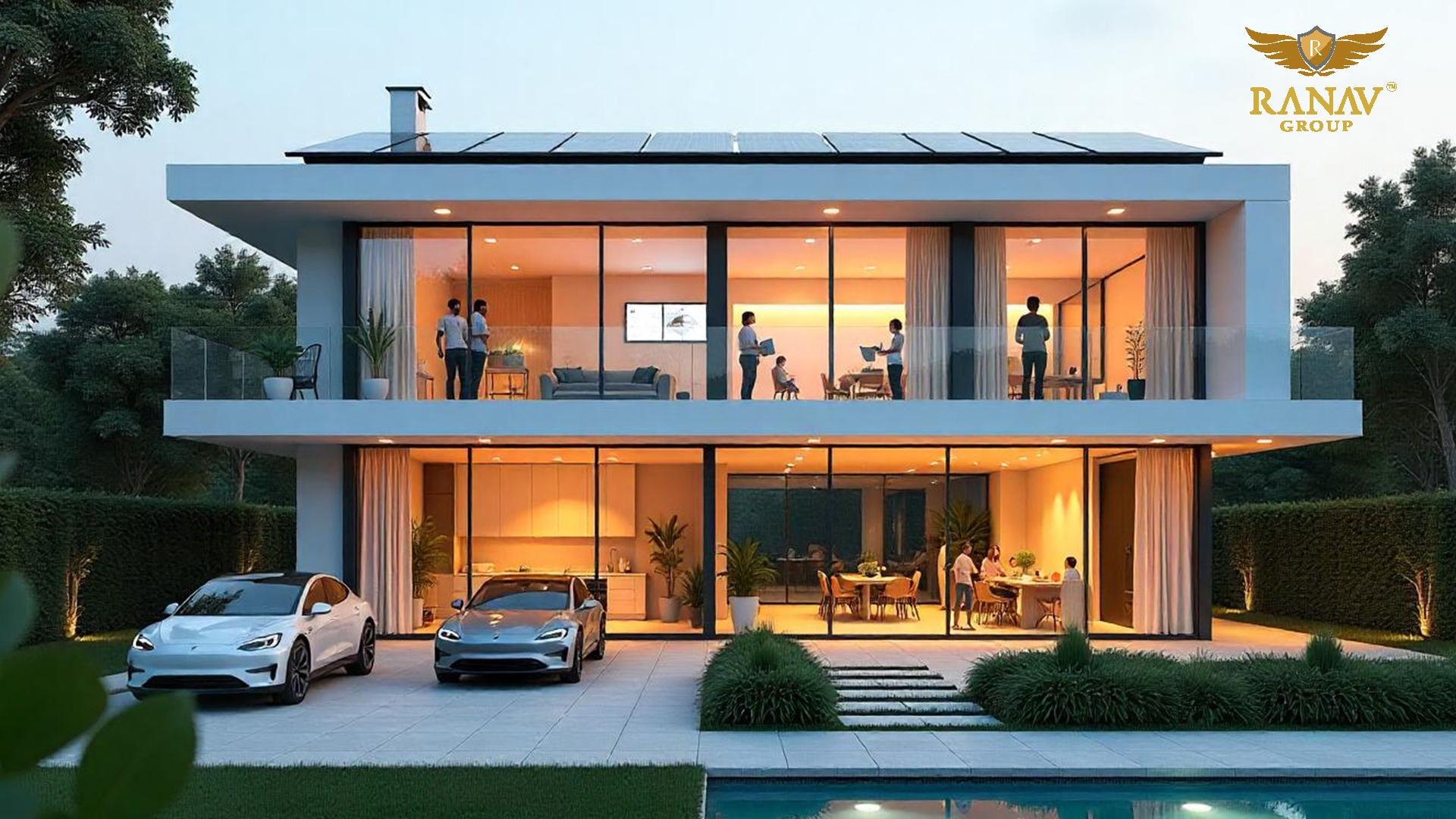Hey Guys!
The design of homes to harmonically incorporate modern technology is critical for a future-ready lifestyle. Smart home architecture systems can consequently install a host of goodies: convenience, security, energy efficiency, and sustainability.
We will discuss these smart home architectural concepts in detail in this guide, which will help transform our present-day living spaces into suitable environments for the future.
Understanding smart home architecture
Smart architecture involves the planning and setting out of technology inside a functioning architecture. A smart home allows the owner to control the systems such as lighting, heating, security, or entertainment from distant areas or set them on automated processes.
The idea is to form a space that knows its occupants and what they need, responds to the occupants within, and can even change its configuration to suit the need of the moment.
Key Components of Smart Home Design
Integrated Home Automation Systems
The foundation of the smart home architecture is the implementation of integrated home automation systems. These systems form the backbone of the smart home, interconnecting several devices and allowing for centralized control. Complete solutions such as Control4 and Crestron manage every aspect of lighting, climate, security, and entertainment from a single interface.
Energy Management and Sustainability
Incorporating energy-efficient technologies is one of the hallmarks of smart home design. Solar panels, energy-efficient appliances, and smart grids all help to keep a home's carbon footprint small. Automated systems can reduce energy use by controlling lighting and temperature in accordance with the presence of people and the time of the day, thus accruing significant savings for homeowners and the environment.
Advanced Security Systems
Security in the modern smart home is prevailing. Integration of advanced security systems, such as facial recognition systems, motion detection, real-time surveillance, etc., will serve in keeping home owners safe and mind. You can monitor and control them remotely, ensuring security is never far from your mind, whether you are at work or on a foreign vacation.
Adaptive Lighting Solutions
Smart lighting systems offer both aesthetic and functional benefits. They can adjust brightness and color temperature based on the time of day or specific activities, creating the desired ambiance while conserving energy. Voice-controlled and motion-sensing lights add an extra layer of convenience and efficiency.
Intelligent Climate Control
Integrating smart thermostats and climate control systems allows for precise management of indoor temperatures. These systems learn user preferences and adjust settings automatically to enhance comfort and optimize energy usage. Remote access features enable homeowners to control climate settings from anywhere, ensuring a comfortable environment upon arrival.
Seamless Connectivity and IoT Integration
The Internet of Things (IoT) is a cornerstone of smart home architecture. Ensuring that various devices can communicate effectively requires a robust and reliable network infrastructure. Designing homes with built-in Wi-Fi boosters and considering the placement of routers can enhance connectivity, facilitating seamless operation of all smart devices.
Voice and Gesture Control Interfaces
The evolution of user interfaces has led to the adoption of voice and gesture controls in smart homes. These intuitive control methods allow for hands-free operation of various systems, enhancing accessibility and convenience. Integrating platforms like Amazon Alexa or Google Assistant enables voice commands to control lighting, entertainment, and more.
Flexible and Multi-Functional Spaces
Smart home design emphasizes adaptability. Incorporating movable walls, retractable furniture, and multi-purpose rooms allows spaces to serve various functions, adapting to the changing needs of occupants. This flexibility is particularly valuable in urban environments where space is at a premium.
Enhanced Entertainment Systems
Integrating state-of-the-art entertainment systems contributes to a comprehensive smart home experience. Whole-house audio systems, home theaters with automated lighting and sound settings, and outdoor entertainment areas equipped with weather-resistant technology enhance leisure and social activities.
Health and Wellness Integration
Modern smart homes are incorporating features that promote health and wellness. Air quality monitors, circadian lighting systems that align with natural sleep patterns, and indoor gardens with automated irrigation contribute to a healthier living environment.
Implementing Smart Home Features in Architectural Design
Incorporating smart technologies during the architectural design phase ensures seamless integration and optimal functionality. Collaborating with architects and technology specialists allows for the creation of a cohesive system where structural elements and technological features complement each other.
For instance, designing dedicated spaces for server racks, ensuring adequate conduit pathways for wiring, and considering the placement of sensors and control panels can enhance both aesthetics and performance.
Ranav Groups
Ranav Groups stands at the forefront of integrating smart home technologies into contemporary architecture. With a commitment to innovation and quality, they offer comprehensive solutions that encompass design, implementation, and maintenance of smart home systems.
The company's experts tailor each project to the client's lifestyle, incorporating the latest advancements in home automation, energy management, and security. By prioritizing user-friendly interfaces and sustainable practices, Ranav Groups delivers homes that are not only intelligent but also responsible and aesthetically pleasing.
Conclusion
The integration of smart technologies into home architecture is not merely a trend but a significant evolution in residential design. By embracing these innovations, homeowners can enjoy enhanced comfort, security, and efficiency. Collaborating with experienced firms like Ranav Groups ensures that these technologies are seamlessly incorporated, resulting in homes that are truly future-ready.
As technology continues to advance, the possibilities for smart home architecture will expand, offering even more opportunities to create living spaces that are responsive, adaptable, and attuned to the needs of their occupants.
Explore Our Recent Blogs
